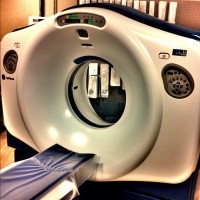Author Interviews, Biomarkers, Johns Hopkins, NIH, Pulmonary Disease, Transplantation / 29.01.2019
First Blood Test To Predict Lung Transplant Rejection
MedicalResearch.com Interview with:
Sean Agbor-Enoh, M.D., Ph.D.
Co-Director/Staff Clinician
Laboratory of Transplantation Genomics
National Heart, Lung, and Blood Institute
National Institutes of Health
MedicalResearch.com: What is the background for this study?
Response: People who receive organ transplants may develop acute or chronic rejection, in which the body’s immune system attacks the transplanted organ. While acute rejection is treatable and reversible, chronic rejection is not and remains the most common cause for organ transplant loss. Lung transplant recipients have the shortest survival rates among patients who get solid organ transplantation of any kind—only about half live past five years. This poor survival rate among lung transplant recipients is due in part to a high incidence of chronic rejection. Existing tools for detecting signs of rejection, such as biopsy, either require the removal of small amounts of lung tissue or are not sensitive enough to discern the severity of the rejection.
Building upon earlier work, our research team developed a simple blood test that can detect when a newly transplanted lung is being rejected by a patient, even when no outward signs of the rejection are evident. The test could make it possible for doctors to intervene faster to prevent or slow down so-called chronic rejection—which is severe, irreversible, and often deadly—in those first critical months after lung transplantation. This same test might also be useful for monitoring rejection in other types of organ transplants.
Called the donor-derived cell-free DNA test, the experimental test begins with obtaining a few blood droplets taken from the arm of the transplant recipient. A special set of machines then sorts the DNA fragments in the blood sample, and in combination with computer analysis, determines whether the fragments are from the recipient or the donor and how many of each type are present. Because injured or dying cells from the donor release lots of donor DNA fragments into the bloodstream compared to normal donor cells, higher amounts of donor DNA indicate a higher risk for transplant rejection in the recipient.
(more…)










